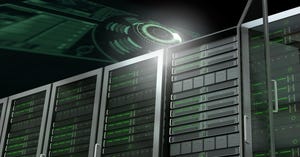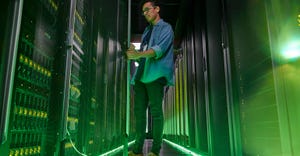How Cloud has Changed Data Center Technology
From networks to business continuity, the cloud has made fundamental changes to data center technology
October 16, 2014

Let’s face it, if you’re a technologist and you’re reading this article, you’re tied to the cloud in one way or another. Whether you have Gmail synced to your phone or you upload photos to Dropbox, you’re utilizing cloud computing. Over the past few years, cloud services have become more enhanced and prevalent. There is more emphasis on data delivery, our ability to continuously stay connected and how our information is distributed.
Data centers and other technologies have had to adapt to this growing trends by deploying, in reality, some pretty cool technologies. This is happening at the IT consumerization level and within the data center:
Cloud Computing – We know about the cloud. We know that there are now four general models to work with (private, public, hybrid and community). The really amazing part that’s been happening is the open-source and cloud connectivity movement that’s been happening. People behind open source projects like OpenStack and CloudStack are creating powerful cloud API models to interweave various services and even platforms. The great part is that these technologies are still evolving and becoming better. Cloud APIs and connection models push the industry towards a more unified cloud architecture. Now, new concepts around software-defined technologies are helping push the cloud boundaries even further. Software-defined storage is a lot more than just a buzz term. It’s a way for organizations to manage heterogeneous storage environments under one logical layer. When convergence around network, storage and compute intersect with software-defined technologies – you create the building blocks for a commodity cloud data center.
Network Communications – This is where it gets really interesting. We’ve heard about software-defined networks, but the reality is that cloud-based networking has become pretty advanced. Cloud providers are deploying highly intelligent switching components which are capable of handling thousands of virtual connections. Furthermore, they’re able to present multiple networks to one another and still keep various services segmented. We are seeing more converged and unified systems where advanced networking capabilities are built directly into the rack, server, and storage infrastructure. Layer 4-7 switches are not only controlling traffic – they’re intelligently manipulating it based on various variables. These controls can revolve around geographic policies, connection points, and even device interrogation rules. This is also where we begin to include software-defined networking as powerful cloud data center concept. SDN can create very intelligent, globally connected, environments. Furthermore, SDN can help with load-balancing cloud and data center infrastructures. SDN already helps with global traffic management by logically sending traffic to the appropriate data center. Moving forward, SDN will strive to create even more fluid data center traffic flow automation. These types of efforts will help with downtime, data resiliency, and disaster recovery planning.
Disaster Recovery/Business Continuity – Emergency events can happen at any time – and for any reason. This is where the cloud has helped many organizations create solid disaster recovery or business continuity environments. Whether it’s an active site or a “pay-as-you-go” public cloud model; DR strategies are becoming more feasible for more organizations. A lot of this has to do with better global server load balancing (GSLB) and global traffic management (GTM) techniques. Our ability to route traffic based on numerous variables has empowered organizations to distribute there environments and their data. Not only does GSLB and GTM help by creating one logical network flow for data traffic and user access – administrators are able to keep users closer to their data centers. By identifying the user geo-location, cloud technologies are able to route users to the data center nearest to them. In the event of a failure, GTM and GSLB are able to immediately and transparently, route the users to the next available set data center resources.
The latest Cisco Global Cloud Index shows just how fast everything in the cloud is growing:
Annual global cloud IP traffic will reach 5.3 zettabytes by the end of 2017. By 2017, global cloud IP traffic will reach 443 exabytes per month (up from 98 exabytes per month in 2012).
Global cloud IP traffic will increase nearly 4.5-fold over the next 5 years. Overall, cloud IP traffic will grow at a CAGR of 35 percent from 2012 to 2017.
Global cloud IP traffic will account for more than two-thirds of total data center traffic by 2017.
More is being stored within the cloud and more devices are connecting to the Internet. There are more services delivered via the web and entire organizations can go live without purchasing a single piece of equipment. As the reliance on cloud computing and the Internet continues to expand, the need for continuous innovation will help create even better platforms.
About the Author
You May Also Like
.jpg?width=300&auto=webp&quality=80&disable=upscale)



.jpg?width=300&auto=webp&quality=80&disable=upscale)


